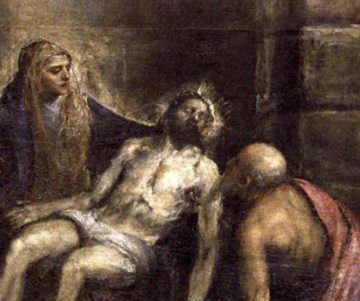Leanne Ogasawara in The Hedgehog Review:
 Given the terrifying nature of the Black Death, it’s hard to understand why Titian didn’t leave Venice in 1576 when he had the chance. He certainly had the means. Fabulously wealthy, he was the most famous artist of his day. Friend of kings and aristocrats, Titian could do whatever Titian wanted. And yet he stayed in his house in the Cannaregio, watching as the skies filled with the acrid smoke of the dead being burned across the lagoon on the dreaded island, Lazzaretto Vecchio, where plague victims were brought to die.
Given the terrifying nature of the Black Death, it’s hard to understand why Titian didn’t leave Venice in 1576 when he had the chance. He certainly had the means. Fabulously wealthy, he was the most famous artist of his day. Friend of kings and aristocrats, Titian could do whatever Titian wanted. And yet he stayed in his house in the Cannaregio, watching as the skies filled with the acrid smoke of the dead being burned across the lagoon on the dreaded island, Lazzaretto Vecchio, where plague victims were brought to die.
Sixteenth-century Venice was like a petri dish. Swampy and unsanitary, conditions in the overcrowded city had always been an invitation to disease. But this was no ordinary sickness. The Black Death struck like lightening, wiping out entire families in days. Bringing agonizing pain, it was often followed by an ignoble death, as disfigured bodies were stripped of their clothing and carted off to be disposed of in mass graves. People prayed and prayed. And those who could, fled to the hills.
The 1576 outbreak in Venice was particularly virulent.
More here.
